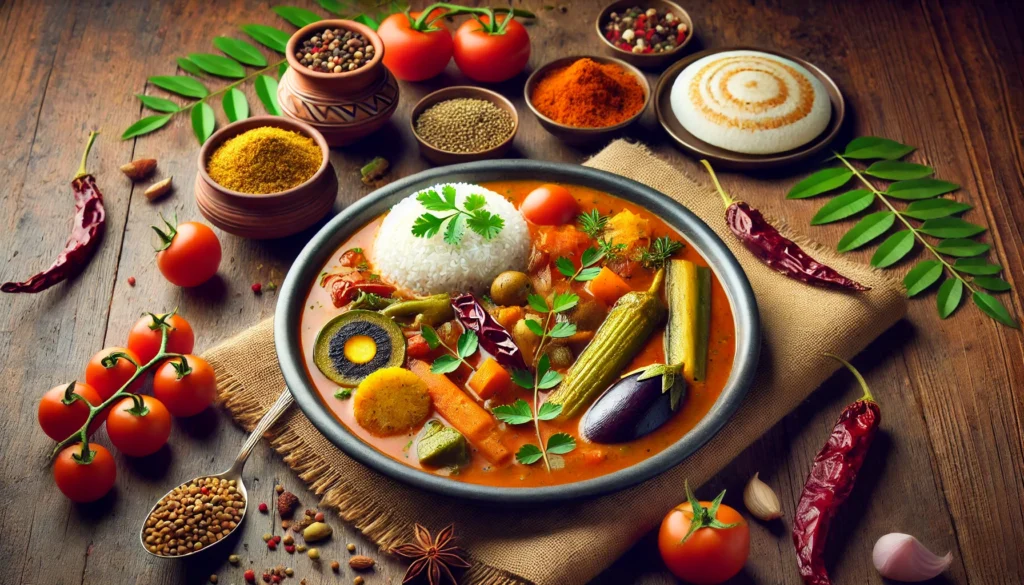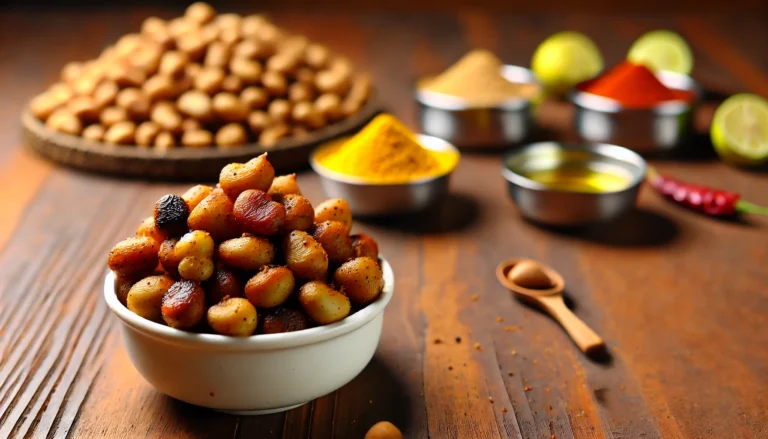5 Tips To Make Perfect Sambar
Sambar is a staple dish in South Indian cuisine, cherished for its tangy, spicy, and aromatic flavors. It is a versatile dish that can be enjoyed with a variety of accompaniments such as rice, idli, dosa, and vada.
Despite its simplicity, achieving the perfect sambar can be a bit challenging. In this blog post, we will explore five essential tips that will help you make the perfect sambar every time.

What is Sambar?
Sambar is a South Indian lentil-based stew made with vegetables, tamarind, and a blend of spices known as sambar powder. It is both nutritious and delicious, making it a popular dish across India. Each region has its own variation of sambar, but the core ingredients and method remain the same.
1. Choosing the Right Lentils
The foundation of a good sambar is the lentils, commonly known as dal. The most frequently used lentil for sambar is toor dal (pigeon peas). However, you can also use a combination of lentils such as moong dal (split green gram) and masoor dal (red lentils) to add depth to the flavor and texture.
Tip: Always rinse the lentils thoroughly under running water and soak them for at least 30 minutes before cooking. Soaking helps in reducing the cooking time and ensures the lentils are soft and creamy.
2. Perfecting the Sambar Powder
Sambar powder is the heart of this dish. While store-bought sambar powder is convenient, making it at home can significantly enhance the flavor of your sambar. The homemade sambar powder is fresh, aromatic, and can be tailored to suit your taste preferences.
Ingredients for Homemade Sambar Powder:
- Coriander seeds: 2 tablespoons
- Dry red chilies: 5-6 (adjust to taste)
- Chana dal (Bengal gram): 1 tablespoon
- Urad dal (black gram): 1 tablespoon
- Fenugreek seeds: 1/2 teaspoon
- Cumin seeds: 1 teaspoon
- Mustard seeds: 1/2 teaspoon
- Black peppercorns: 1/2 teaspoon
- Asafoetida (hing): A pinch
- Curry leaves: 10-12
- Turmeric powder: 1/2 teaspoon
Instructions:
- Dry roast all the ingredients except turmeric powder in a pan over medium heat until they turn golden brown and aromatic.
- Allow the roasted ingredients to cool completely.
- Grind them to a fine powder using a spice grinder or blender.
- Add turmeric powder to the ground mixture and mix well.
- Store the sambar powder in an airtight container for up to a month.
Tip: Always roast the spices on a low to medium flame to prevent burning and to ensure even roasting. Freshly made sambar powder can make a significant difference in the taste of your sambar.
3. Balancing the Tamarind
Tamarind provides the distinctive tangy flavor in sambar. The key to perfect sambar is balancing the sourness of tamarind with the other flavors. Using too much tamarind can make the sambar overly tangy, while too little can make it bland.
Tip: Soak a small lemon-sized ball of tamarind in warm water for 10-15 minutes. Extract the pulp and strain it to remove the seeds and fibers. Add this tamarind extract to your sambar gradually, tasting as you go, until you achieve the desired level of tanginess.
4. Adding Vegetables
Vegetables are an integral part of sambar, adding texture, flavor, and nutrition. You can use a variety of vegetables such as drumsticks, carrots, radishes, brinjal (eggplant), tomatoes, pumpkin, and beans. Each vegetable contributes a unique flavor and enhances the overall taste of the sambar.
Tip: Cut the vegetables into uniform pieces to ensure even cooking. Add the vegetables that take longer to cook first, followed by the ones that cook quickly. This way, all the vegetables will be perfectly cooked by the time your sambar is ready.
5. The Final Tempering
The tempering or tadka is the final touch that elevates the flavor of sambar. It is made by heating oil or ghee and adding mustard seeds, cumin seeds, dried red chilies, curry leaves, and asafoetida. This tempering is poured over the cooked sambar just before serving.
Tip: Use ghee for tempering to add a rich and aromatic flavor to your sambar. Ensure that the oil or ghee is hot enough before adding the mustard seeds. Once the mustard seeds start to splutter, quickly add the remaining ingredients and pour the tempering over the sambar immediately.
Step-by-Step Recipe for Perfect Sambar
Ingredients:
- Toor dal (pigeon peas): 1 cup
- Mixed vegetables: 2 cups (drumsticks, carrots, radishes, brinjal, tomatoes, pumpkin, beans)
- Tamarind: A small lemon-sized ball
- Sambar powder: 2 tablespoons
- Turmeric powder: 1/2 teaspoon
- Salt: To taste
- Water: 4-5 cups
- Coriander leaves: For garnish
For Tempering:
- Ghee or oil: 2 tablespoons
- Mustard seeds: 1 teaspoon
- Cumin seeds: 1/2 teaspoon
- Dry red chilies: 2-3
- Curry leaves: 10-12
- Asafoetida (hing): A pinch
Instructions:
- Cook the Lentils:
- Rinse and soak the toor dal for 30 minutes.
- Pressure cook the soaked dal with 2 cups of water and turmeric powder until soft and mushy.
- Mash the cooked dal and set aside.
- Prepare the Tamarind Extract:
- Soak tamarind in warm water for 10-15 minutes.
- Extract the pulp and strain it to remove seeds and fibers. Set aside.
- Cook the Vegetables:
- In a large pot, add the mixed vegetables and enough water to cover them.
- Cook the vegetables until they are tender but not mushy.
- Combine the Ingredients:
- Add the cooked lentils to the pot of vegetables.
- Add the tamarind extract and sambar powder.
- Add salt to taste and mix well.
- Let the sambar simmer on low heat for 10-15 minutes, allowing the flavors to meld together.
- Temper the Sambar:
- In a small pan, heat ghee or oil.
- Add mustard seeds and let them splutter.
- Add cumin seeds, dry red chilies, curry leaves, and asafoetida.
- Pour the tempering over the simmering sambar and mix well.
- Garnish and Serve:
- Garnish the sambar with fresh coriander leaves.
- Serve hot with steamed rice, idli, dosa, or vada.
Conclusion
Making the perfect sambar requires attention to detail and a balance of flavors. By following these five tips—choosing the right lentils, perfecting the sambar powder, balancing the tamarind, adding the right vegetables, and finishing with a flavorful tempering—you can create a delicious and authentic sambar that will delight your family and friends. Enjoy this classic South Indian dish and bring the taste of tradition to your table.


